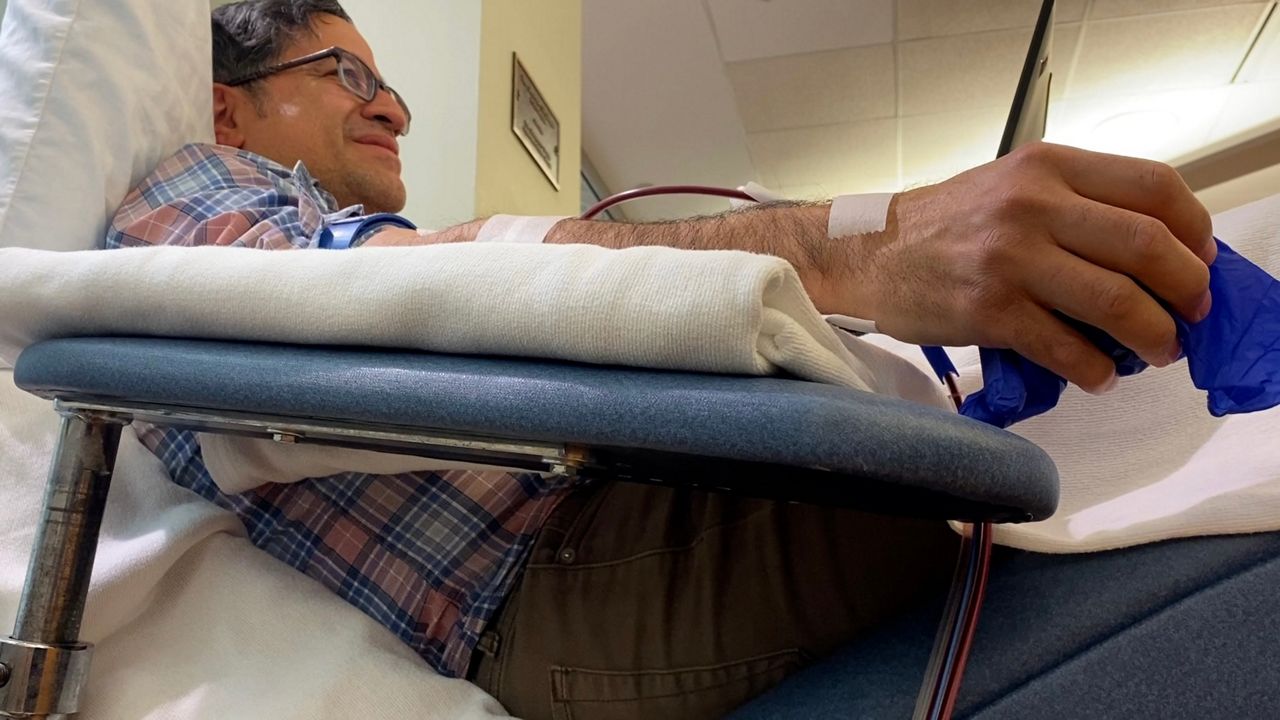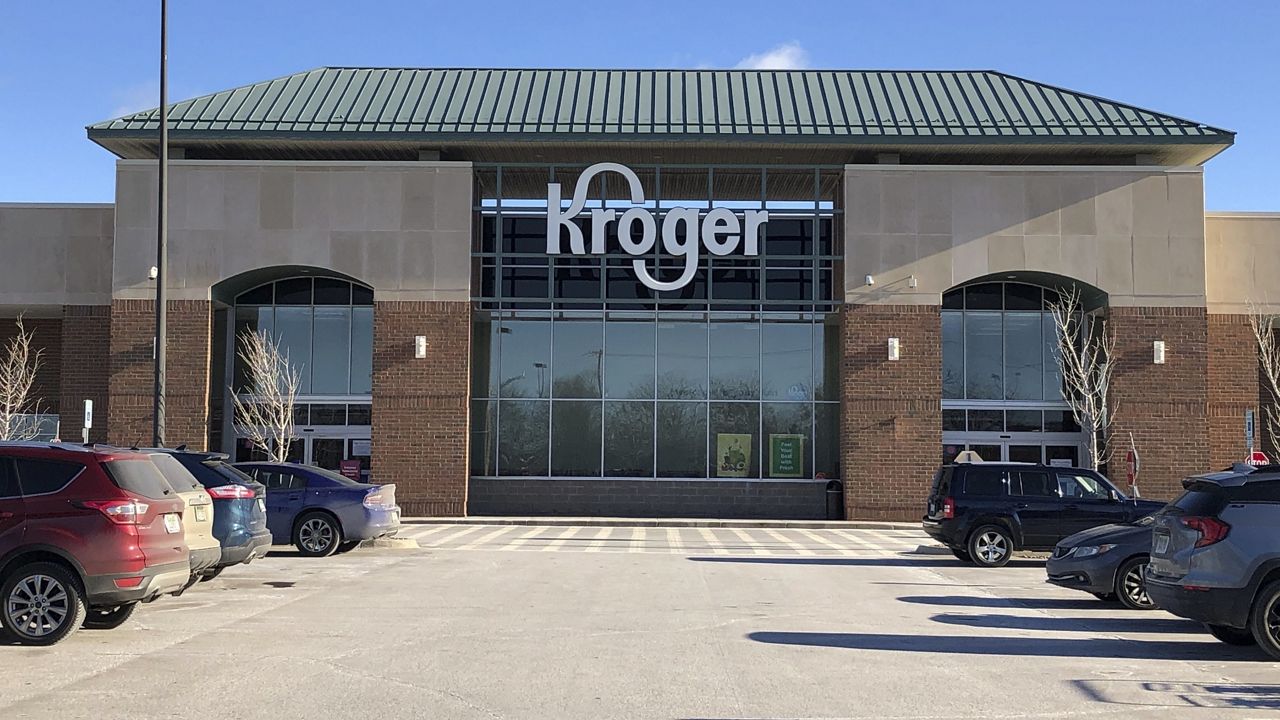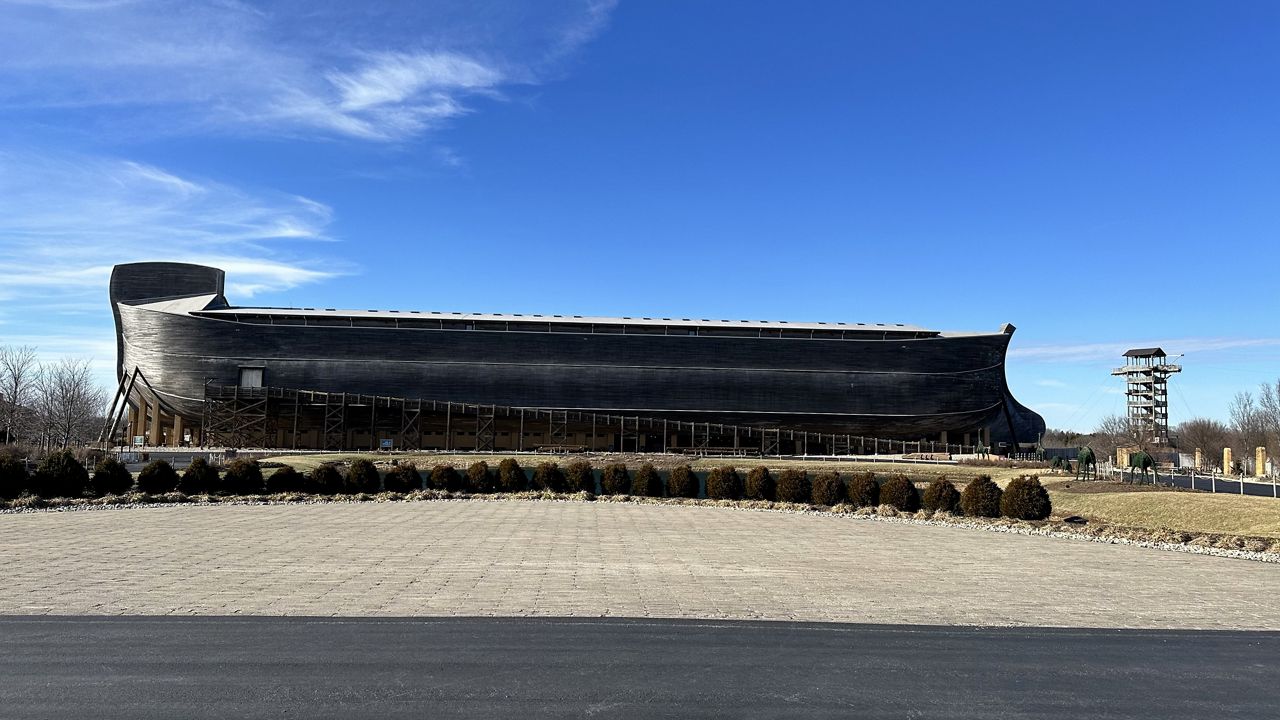FLORENCE, Ky. — Trying to comfort someone nearing the end of their life, or comfort that person’s family, is no simple task. But for almost two years now, dozens of quilters have been doing just that for sick patients in northern Kentucky.
Thanks to these selfless quilters, people facing the scariest of circumstances have something warm and soft to wrap around them. And when they’re gone, their families have something to hold on to and remember them by, knowing it helped ease their loved one’s pain.
Paula Mainhart is one woman providing that comfort.
“It makes them happy that people were thinking of them,” Mainhart said. “Whoever needs it, I hope it can cheer them up. I pray over my quilts so when they get to their destination, it’s like a hug.”
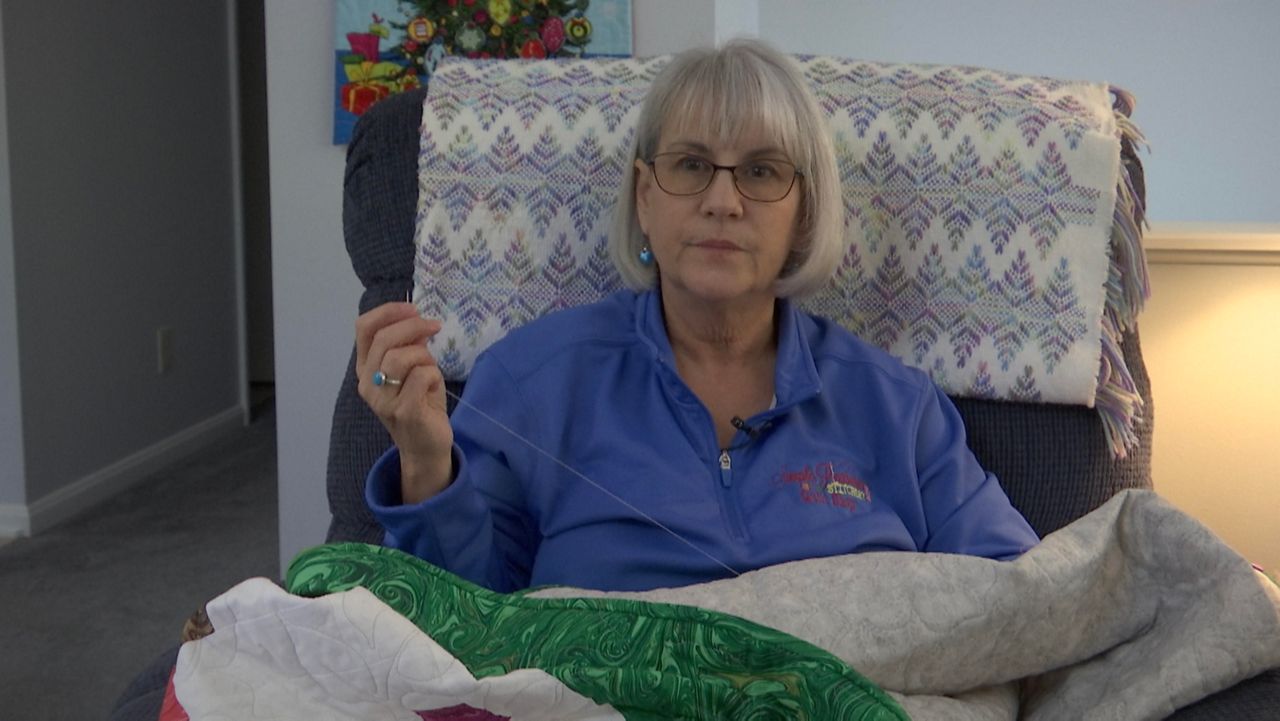
Pulling on this story’s thread will lead back to the start of the COVID-19 pandemic. Rachael Logsdon, a quilter who lived in northern Kentucky at the time, wanted to help St. Elizabeth hospitals.
“I wanted to make masks,” she said. ”I heard people were needing masks, that there’s a mask shortage they didn’t know what to do with.”
Logsdon started a Facebook group for people who wanted to make masks and donate them to St. Elizabeth hospitals. Mainhart said Facebook recommended her to join the group, so she did.
“I made over 300 masks,” she said.
Mainhart was one of many.
“It turned into a group of 100 some people. We made thousands of masks for St. Elizabeth during that time,” Logsdon said. “A couple months later, I got a call from a nurse at St. E that knew I had been donating quilts to a hospice locally, and wanted to know if I would be interested in donating quilts to their hospice program. And I was like, ‘of course.’ I’m a breast cancer survivor, and St. E was a big deal for me.”
Tracey Williams was that nurse. She works in the ICU at St. Elizabeth’s Fort Thomas location.
“The Bereavement committee was my capstone project for my BSN. We would provide items to the family once a patient passed in the ICU. I asked Rachael if anyone would be interested in making or donating quilts to the ICU so that we can place them on our most critical patients or as they transitioned to comfort, palliative, hospice care,” Williams said.
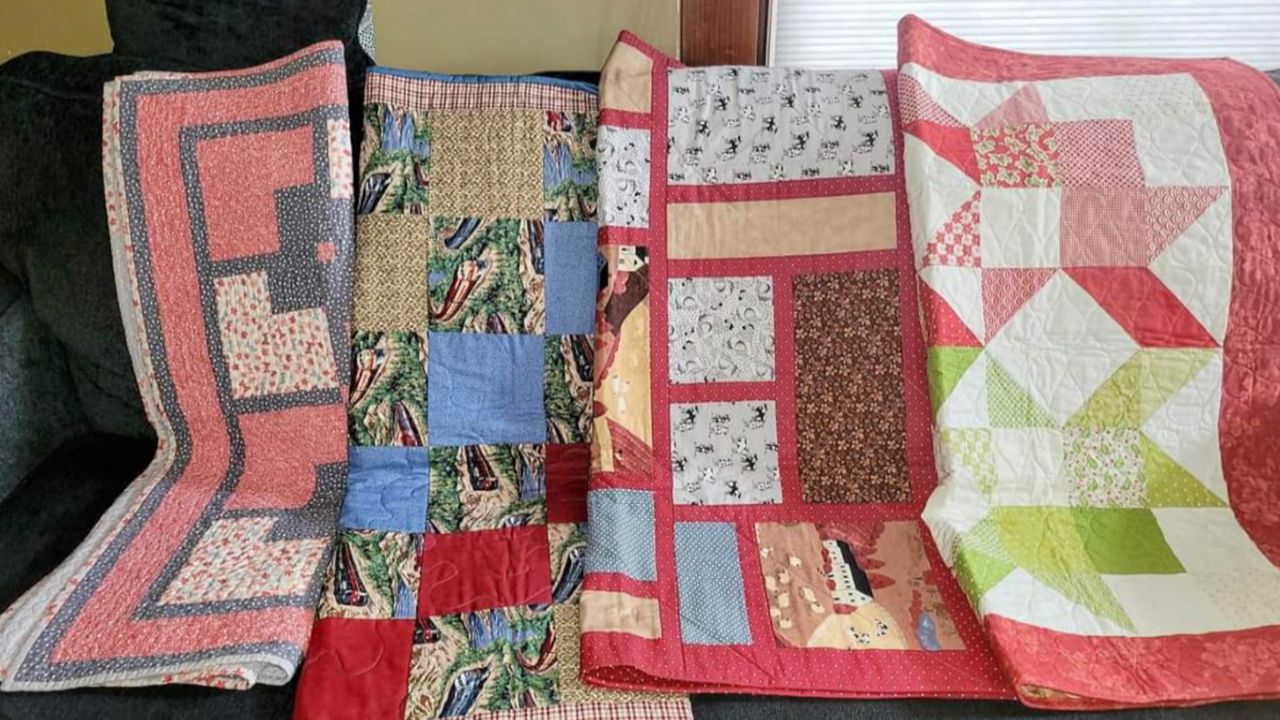
A new Facebook group was made, and before Logsdon knew it, several local quilting guilds, including hers: Licking Valley Quilters, along with other independent quilters like Mainhart, were getting involved, and making quilts for St. Elizabeth hospice patients.
“And then, after they’re in hospice and they pass, the family members can have the quilts,” Mainhart said.
Others in the group include Ohio Valley Quilters, Mt. Auburn Homemakers, Jody Huneke and Suzette Middleton, among others.
Williams helps coordinate donations.
“We call them prayer blankets or comfort blankets. The response from the community, both quilting guilds and individual women, has been amazing. The donations have meant the world to me. I find comfort in knowing that we can provide these quilts and afghans to our patients and their families at probably one of the most difficult times in their lives,” she said. “The ladies don’t have to do this, yet they continue to put their time, supplies, and, more importantly, their heart into each item they sew. I cannot thank them enough.”
Mainhart said, as a young girl, she used to go to her grandmother’s house across the street to sew.
“Everybody has a gift. And I always wanted to sing and play the piano, which I took piano lessons. I don’t play that well. If I sing around my family, they beg me to stop, so it’s not that. But my gift is sowing. I’ve been sowing since I was 13. I used to make my own clothes in school,” she said. “When my grandmother passed, they found all these quilt tops in her home. And I thought, ‘why didn’t grandma ever bring those out and teach me how to quilt?’ So I got some of her quilt tops, and I started quilting by hand, and the rest, I learned on my own.”
Mainhart volunteers at Simple Pleasure Stitchery, a quilt shop in Dry Ridge. She doesn’t make any money, but gets discounts on fabric and other materials. She said her skills have improved while working there with her “quilting sisters.”
Her favorite quilt took her about 10 months to complete. Granted, she was working on two or three other quilts at the same time, as she typically does.
“It’s very heavy,” she said, smiling, holding the large quilt with an intricate kaleidoscope design. “I typically give all my quilts away. Some people sell theirs. I’ve never sold one yet. I’m not saying if I didn’t have a nice quilt, and somebody might offer me a tiny sum, I wouldn’t take it. But I donate them, and I’m running out of family members to give them to. You can only have so many in your home. You run out of room.”
One of Mainhart’s quilts went to one of her dearest friends back in her home state of Pennsylvania, who’d been fighting cancer for over 11 years.
“I post pictures of my quilts, and she said to me, ‘I will buy a quilt from you.’ And I said, ‘I won’t sell you a quilt, but I’ll give you a quilt.’ So, I sent her my quilt, and she sent me pictures of her wrapped up in her quilt. She was just buried the other day,” Mainhart said, holding back tears. “But you know what, I said, ‘every time you wrap yourself in that quilt, just think it’s a big hug from me.’ And she just was so excited to get that quilt. I was glad I sent it to her.”
Patients like Mainhart’s friend, and their family members, have sent several notes to the quilters, thanking them for the precious gifts they received.
“It’s always a big deal. Every time we get a letter or anything, we post it on the Facebook page, and everybody gets all excited about it. It’s just such a neat thing to get to do, and know that this is affecting the patients, the families, everybody getting involved with this. It’s just really, really cool,” Logsdon said.
Logsdon said the group was donating about 20 quilts a month when she moved to North Carolina a year ago. St. Elizabeth says the group has donated over 200 quilts to date.
“That’s a really big deal. Because these quilts take a lot of time to make,” she said.
If working constantly, a typical quilt can take about a week to make, Logsdon said. But most of the quilters take a month or more.
Mainhart doesn’t mind, and in fact, enjoys the long process of creating a quilt. She said she’s sure the other quilters don’t mind, either. While some people are “diehard hand quilters,” as Mainhart calls them, she prefers to do most of her work by machine, though she will do some finishing touches by hand.
“I do find that cathartic. I like to quilt by hand. But I’m anxious to get them done quicker,” she said. “We love to quilt. And when you give a part of yourself like that, you know, no two quilts are alike. You could have the same pattern, the same fabrics, but each quilt is different. So they’re all individuals. They’re like snowflakes,” she said.
Those ‘snowflakes’ are bringing joy to those who need it most.
Logsdon is still involved, despite no longer living in northern Kentucky. She said the group has 85 members, and she’d like to see it continue to grow.





